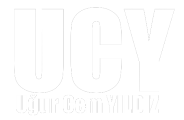We hear a lot about agility nowadays. Agile methods have become infamous all around after their successful utilization in software development area. Actually, it is possible to see earlier and fairly extensive utilizations of agile methods at the mids of 1900s in other industries (for example at Bell Laboratories, Toyota, North American Aviation, Saab … etc.) Software developers got introduced to the agile mindset later; but they adopted it very quickly and successfully into their projects. The great results they achieved caught attention of other professions and industries. And now many organizations are racing to adopt agile methodologies and even going further than project and portfolio level by transforming themselves with the hope of achieving a larger scale of agility.
Why is Scaled Agility on Demand? Why Now?
Why has corporate world begun to show such a big interest in agility? The main driver is apparently the need for being more adaptive and responsive in the increasingly volatile, uncertain, complex and ambiguous (VUCA) world. Should companies like to live longer, they must be as responsive as their competitive environments demand.
Research demonstrates that organizations become increasingly inert as they age and frequently fail to adapt effectively. Famous examples of this phenomenon include Blockbuster, Kodak, Nokia, Polaroid, PanAm. It is also know that such failures are particularly prevalent when the frequency and magnitude of the external change is bigger.

Main proposition of agile methods is to keep customers happier by delivering higher value faster under uncertainty and keep employees happier by creating a more productive and self-fulfilling work environment for them. Doing this at scale is such an attractive proposition that no modern organization can turn a blind eye to it. As a result, the new hype in the corporate world has become the “scaled agility” or in other worlds “organizational agility”.
What is Agility?
As far as the agility at a smaller scale such as projects is considered, there are plenty of approaches developed and validated in different domains. I have spent quite a lot of time to learn these and also have managed implementation of many of them in different settings. Anyone who experiences these approaches fairly enough can recognize that all are based on a similar set of assumptions. These assumptions favor iteration, collaboration, openness to change, constant learning through experimentation…etc. And all practices in these approaches seek to maximize customer value or minimize the work to create value or achieve both. For example, Scrum – the most known and used agile approach in software development – institutes a PO role, whose main mission is to maximize customer value. The role owner is expected to accumulate deep customer insight, decide and prioritize what to do to best serve the customer. Iterative and short plan-do-check-adapt cycles help to keep waste (unused features, rework, defect …etc) at minimum.
After all, I believe we can reduce the purpose of agile philosophy into this sentence: “Maximizing value efficiency under uncertainty”.
“Agility” is the ability to maximize value efficiency under uncertainty.

What does “Agility” at Organizational Scale Mean?
Organizational agility is not a clearly defined concept. However most definitions run around the keyword of “adaptation”. So an encompassing definition can be the ability of an organization to adapt quickly and succeed in the face of changing environment.
However, I would like to make a different definition by extending the “value efficiency” concept to organizations. In order to achieve “value efficiency”, organizations must continuously increase the value provided to customers by exploring high value opportunities, quickly reconfiguring themselves to run after the most valuable ones and realizing these opportunities with the least work possible.
For a start-up, this is easy, since the entire organization’s mission is exploration. However, for most established organizations, the situation is quite different. While exploring to ensure their future viability, they must simultaneously maintain their focus on existing core businesses and exploit them as much as possible to ensure their current viability. In other words, they should be ambidextrous. However all established organizations are more focused on exploitation, and struggle to explore. Exploration requires a distinct set of dynamic capabilities, which are considerable different than the ones required in exploitation. As James March, a Nobel Prize winner organizational theorist, expressed very neatly quite a long time ago, this is the most basic problem of any established organization.
As a result, I would like to argue that organizational agility translates into organizational ambidexterity for established organizations.
Below, there is a definition I forged according to the above mentioned perspective.
“Organizational Ambidexterity / Agility (OA)” is the ability to
– continuously explore high value opportunities,
– quickly reconfigure strategy and the organization (structure, processes, people, and resources) toward high priority ones and
– realize them efficiently
under uncertainty, while exploiting existing opportunities.
See “What is Organizational Ambidexterity?” or “The Principles of Organizational Ambidexterity / Agility (OA)“. Return to OrgAnarchist section.


